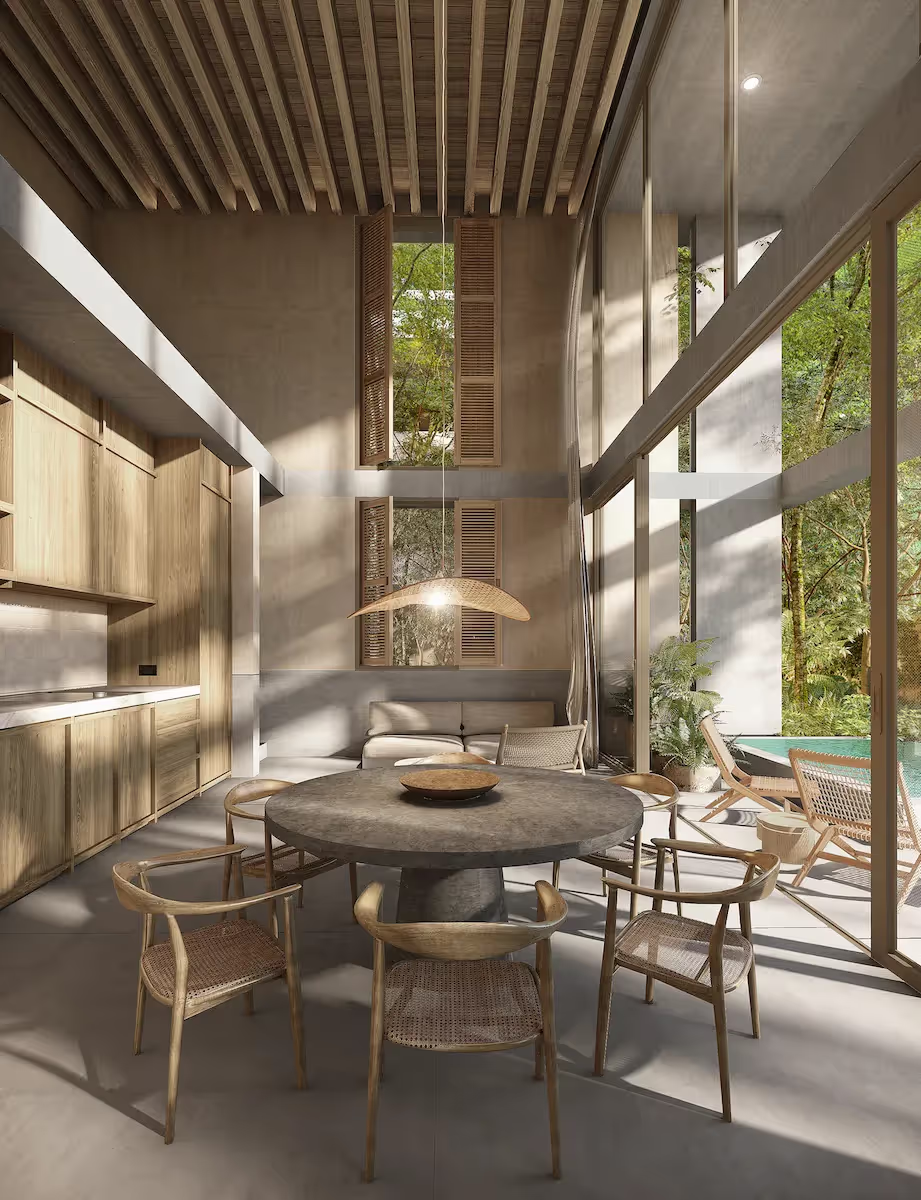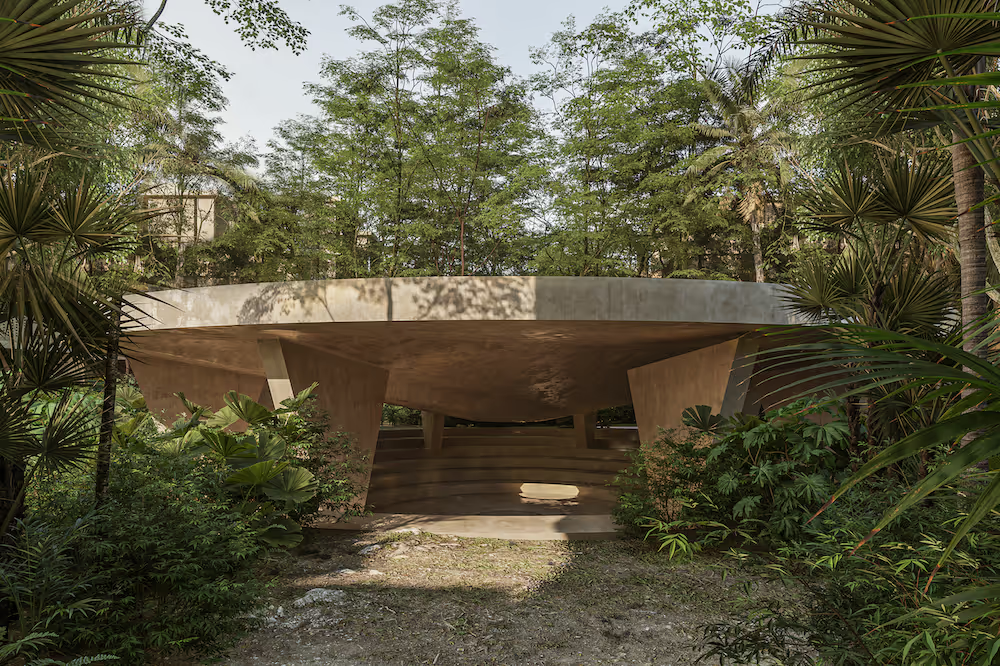To buy property in Mexico is an exciting step for international buyers. Still, many wonder: can foreigners actually finance real estate in Mexico? The short answer is yes, though the process and options differ from home countries.
In this guide, we will break down all the financing routes available for non-Mexican investors, including bank loans, private lending and developer financing. We will also highlight pros and cons of each method as well as a step-by-step roadmap to financing real estate in Mexico as a foreigner.
Overview: Financing Options for Buying Real Estate in Mexico
Foreign buyers historically purchased Mexican property with cash, and even today over 90% of real estate deals in Mexico are cash transactions. However, with the growth of markets like Tulum, financing has become more accessible. International investors now have several financing options:
- Mexican bank mortgages: Some local banks offer home loans to foreigners (typically requiring residency status).
- Cross-border and private lenders: Specialized institutions (often U.S.-based or fintech companies) provide USD-denominated loans for Mexican properties.
- Developer financing: Real estate developers in Mexico frequently offer direct financing or payment plans for pre-construction (presale) purchases.
- Home country leverage: Some buyers opt to refinance or borrow against property in their home country (e.g. a home equity loan) to fund a purchase in Mexico.
Each route comes with its own requirements, benefits and drawbacks. Let’s explore these in detail.
Bank Loans in Mexico for Foreign Buyers
Mexican banks do offer mortgages to foreigners, but usually under more restrictive conditions than domestic borrowers. Typically, a foreign applicant must:
- Provide proof of income & credit: expect to submit bank statements, tax returns, and credit reports from your home country.
- Make a larger down payment: Loan-to-value ratios are lower for foreigners. Mexican banks might lend only 50–70% of the property’s value to a foreign buyer. In practice, this means a 30-50% down payment is common.
- Pay higher interest rates: Mortgage rates in Mexico tend to be higher than in the U.S. or Canada. For example, local peso-denominated loans often start around 8-9% annual interest (or more).
Alongside banks, non-bank financial institutions also operate in Mexico. One example is HIR Casa, a well-established company that offers autofinanciamiento inmobiliario (self-financing). Their plans can start from around MXN 300,000, typically requiring a 33% down payment, with flexible schemes and terms of up to 10 years.

Cross-Border and Private Financing Options
If dealing with Mexican banks sounds daunting, cross-border mortgages or private lending might be attractive. These options let you finance a property without going through local banks, often keeping the loan in USD.
- Specialized cross-border lenders: Certain firms cater to Americans and other foreign buyers in Mexico. For example, Global Mortgage (MoXi) offers U.S. citizens 15-30 year fixed-rate loans in USD for Mexican homes, up to 65% LTV. Similarly, Mexlend (a mortgage broker) provides USD loans to U.S./Canadian buyers and also works with Mexican banks for peso loans. These lenders assess your foreign credit (e.g. FICO score) and income, often allowing financing even if you lack residency or Mexican credit history.
- Fintech and digital lenders: A new wave of Mexican fintech companies now target foreign investors. Yave, for instance, launched a 100% digital mortgage platform for non-Mexican borrowers. Yave’s process does not require a CURP, RFC, or a Mexican residency. They leverage international credit reports to qualify buyers and offer up to 85% financing with terms to 20 years. This innovation addresses a common issue: foreigners’ lack of local credit history.
Pros: Cross-border and private loans can offer more flexible qualification – you may not need Mexican residency or credit. Many are in USD, which is convenient for U.S. buyers to avoid exchange risk. Interest rates could be competitive with U.S. loans in some cases.
Cons: These loans often require large down payments (often 30% or more) and have minimum loan amounts (MoXi’s minimum is $250K USD loan size, meaning you must buy a fairly high-value property).
Developer Financing (Direct from the Seller/Builder)
For those investing in pre-construction in Tulum, developer financing is one of the most straightforward routes. Many Tulum developers in the most popular areas to invest in Tulum offer in-house financing or payment plans to attract foreign buyers. This typically involves paying installments directly to the developer rather than getting a third-party loan.
For example, a project might allow monthly payments at 0% interest during the build phase. This substantially lowers the barrier for buyers who cannot pay all cash at once.
For example, our real estate development in Tulum, Mayab Tulum, offers flexible seller financing with a 20% down payment.

Pros: Developer financing is convenient and quick to arrange. It often carries 0% or low interest during construction, effectively giving you free leverage while the property is being built. It’s a great way to lock in a lower presale price and potentially enjoy 15-25% property appreciation by completion, making it attractive for Tulum real estate investment.
Cons: It’s usually limited to new developments. The loan term from the developer is relatively short; any remaining balance often comes due upon delivery (or within a few years).
Pros and Cons of Each Financing Method
To summarize, here’s a quick comparison of the main financing options for a Tulum property:
Mexican bank mortgage:
- Pros: Can finance a sizable portion (if you qualify), established legal framework, potential for long terms.
- Cons: Requires residency and extensive paperwork, high interest in pesos, large down payment, slow approval.
Cross-border / Private loan:
- Pros: No residency needed, loan in USD with rates similar to home country, credit based on your foreign history.
- Cons: Often lower LTV (more down payment), limited providers, higher loan minimums, fees can be higher.
Developer financing:
- Pros: Easy approval, low/zero interest during construction, lower purchase price locked in, pick of units in presale, flexible payment plans.
- Cons: Only for new builds, risk of project delays or failure, short repayment period or big final payment, usually cannot finance 100% (you need significant cash down).
Home country financing (refinance or equity loan):
- Pros: No dealing with Mexican banks at all, you have cash in hand to be a strong buyer in Mexico, potentially low interest if from your home.
- Cons: Puts your other property at risk, interest isn’t tied to Mexican asset (so if you sell Mexican property, you still owe the separate loan), and you still end up effectively a cash buyer in Mexico which could limit diversification.
Each investor’s situation will determine the best fit. Some may even combine methods (e.g. use developer financing during construction, then refinance with a cross-border loan after completion to cash out equity).
Step-by-Step: How to Apply for a Mortgage in Mexico as a Foreigner
Ready to pursue financing? Navigating the process can be complex, but breaking it down into steps makes it manageable:
Step 1: Determine Your Eligibility & Choose a Lender:
Before you buy property in Tulum, it’s crucial to assess your financial situation. Start by assessing which financing route suits you. Do you have Mexican permanent residency and local income? If so, a Mexican bank could work. If not, focus on cross-border lenders or developer financing.
Step 2: Gather Required Documentation
Once you’ve targeted a lender or program, compile all paperwork you’ll need. While exact requirements vary, common documents include:
- Passport or government ID.
- Proof of legal status in Mexico (visa/residency card), if applying through a Mexican bank.
- Proof of income (pay stubs, tax returns, or investment income statements).
- Bank statements (often 6-12 months from your accounts).
- Credit report from your home country (e.g. FICO score report).
- Mexican RFC (tax ID) and CURP, if you have them.
- Details of the property (offer to purchase, location, price).
- If applicable, a copy of the fideicomiso trust permit: for properties in restricted zones like Tulum’s coastline, a bank trust is required – your notary or attorney can help set this up. For an overview of fideicomiso, see our guide on how foreigners own property in Mexico.
Step 3: Get Pre-Qualified or Pre-Approved
It’s wise to seek pre-qualification before committing to a property. Lenders can often pre-screen your finances and give an estimate of how much you can borrow.

Step 4: Submit an Application and Receive approval.
Step 5: Closing the Loan and Property Purchase
In Mexico, property closings are handled by a Notary Public who is a government-authorized official. The bank or lender will coordinate with the notary to include the mortgage as part of the property deed transfer. At closing, you’ll sign the mortgage contract and the property title with the fideicomiso. You will pay your down payment and the lender will disburse the loan to the seller. Ensure that all funds (down payment, closing costs, taxes) are ready in advance.
For a detailed breakdown of expenses, see our guide on buying a home in Tulum.
For a comprehensive overview of the purchasing process in Mexico, explore our guide on how to buy property in Mexico.
Start Your Journey Today
Financing real estate in Mexico is entirely possible, and it’s getting easier as new options emerge. By understanding the landscape – from Mexican bank mortgages with higher rates to creative developer financing on pre-construction condos – you can choose the path that best fits your investment goals.
In all cases, due diligence is paramount. Verify lenders or developers, double-check calculations, and ensure legal compliance by using a notary. With the right preparation, foreign investors can confidently navigate Mexican mortgages and turn their Tulum real estate dreams into reality.








